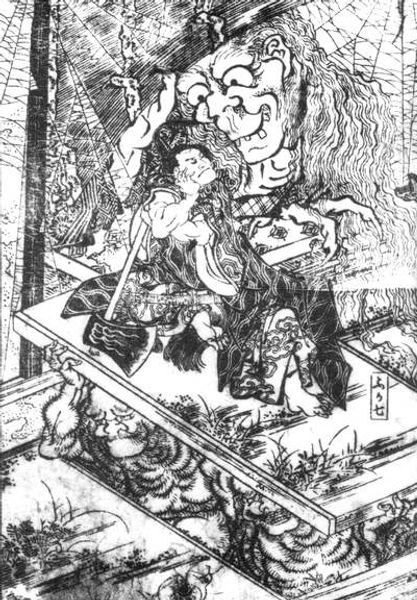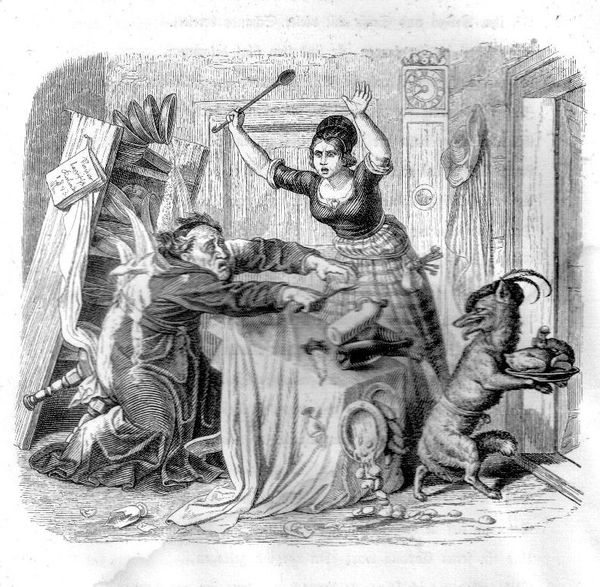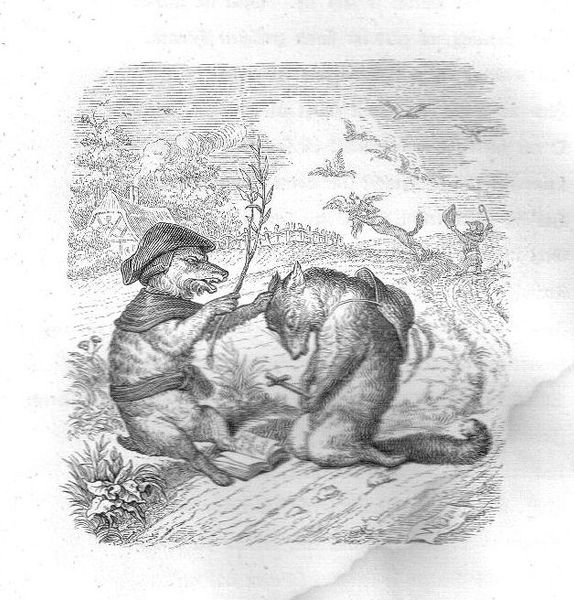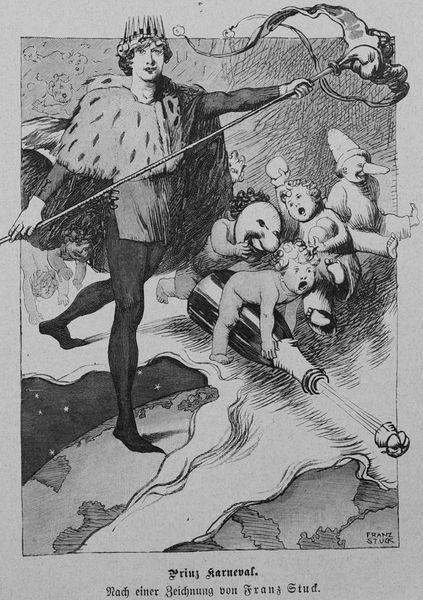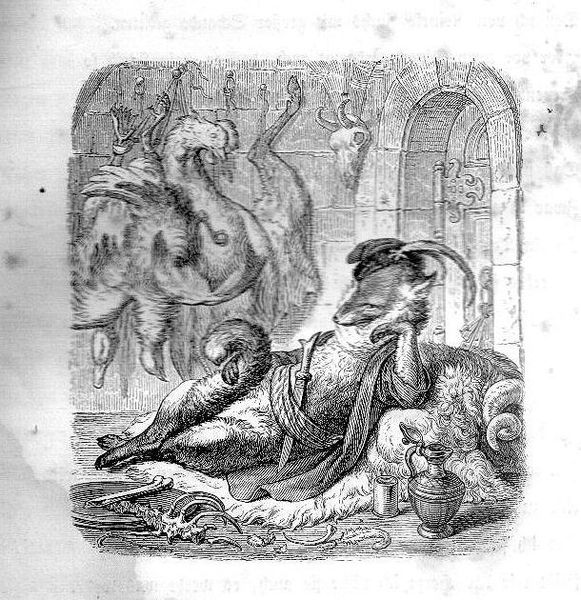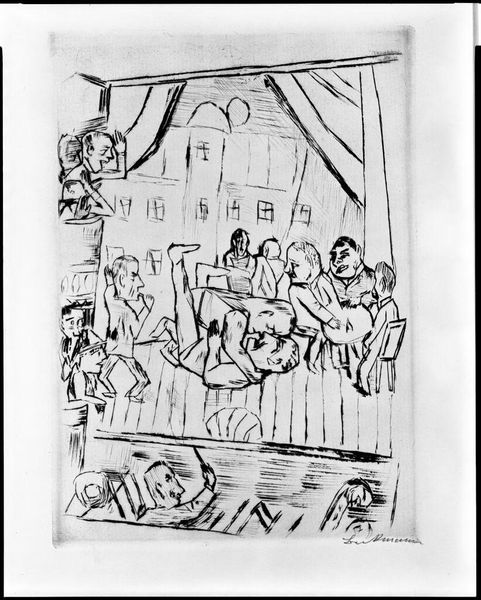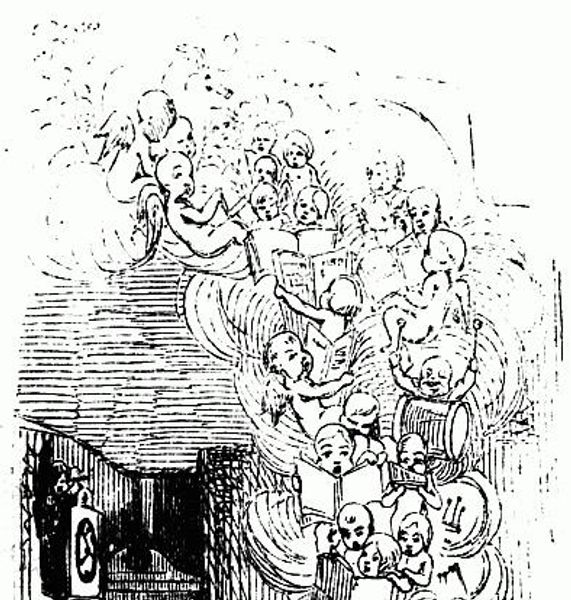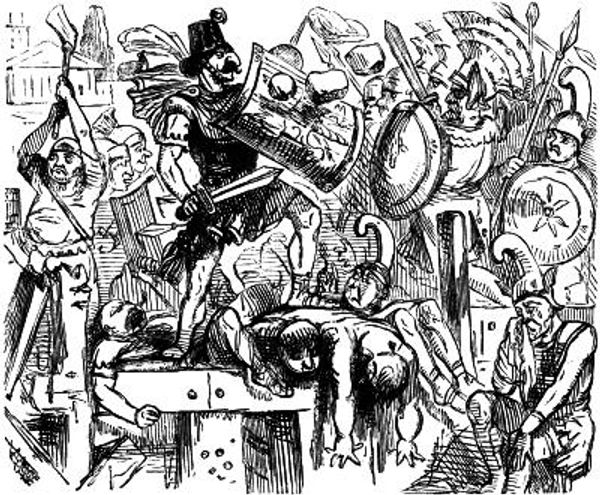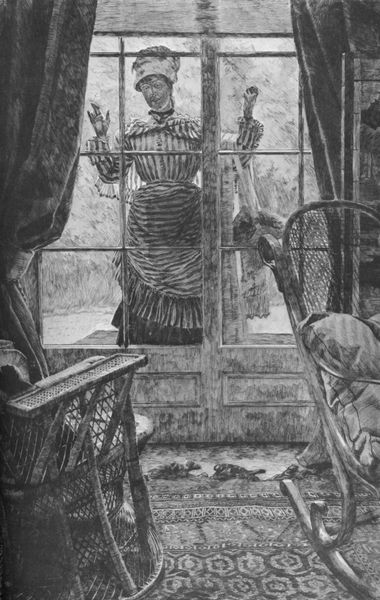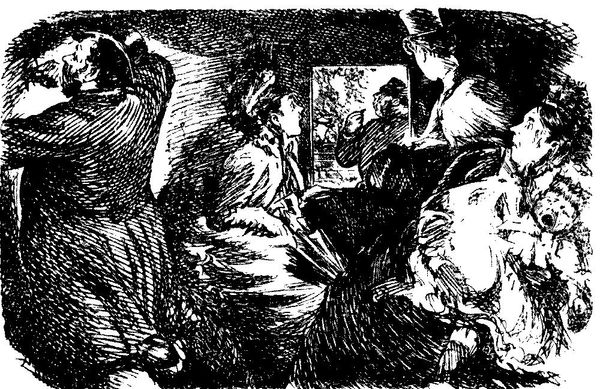
Copyright: Public domain
Editor: This is "Reineke Fuchs1" by Wilhelm von Kaulbach, made in 1857 using ink in a drawing style. The image is just so striking—it has a fairy tale quality, but there's also something a little unsettling about it, with the anthropomorphic animals. How would you interpret this work, thinking about the story it tells? Curator: Indeed. The unsettling quality you perceive comes, I suspect, from the deeply ingrained symbolism associated with the fox. Consider how the fox, across cultures, often represents cunning, trickery, and sometimes even wisdom born of experience. Look at how the fox is seated with the book -- representing not only scholarship but perhaps also hidden knowledge -- next to another creature literally weighed down, struggling under books. Is this not the burden of knowing? Do you see how those elements of deception become entwined with knowledge and societal critique, suggesting the complex relationship between appearance and reality, especially during times of significant socio-political transformation in 19th century Germany? What cultural memories might these images stir? Editor: That’s fascinating, I hadn’t considered the societal implications. It makes the scene so much more complex. Curator: What if it is not a book but stolen treasures. Does that image stir other ideas of social inequalities in 19th Century Germany? How it brings a depth of symbolic meaning. Editor: I see now! Thanks, it definitely makes me want to explore other ways of looking at art. Curator: I concur, seeing is just the start -- cultural memory is always in dialogue with the artwork.
Comments
No comments
Be the first to comment and join the conversation on the ultimate creative platform.
